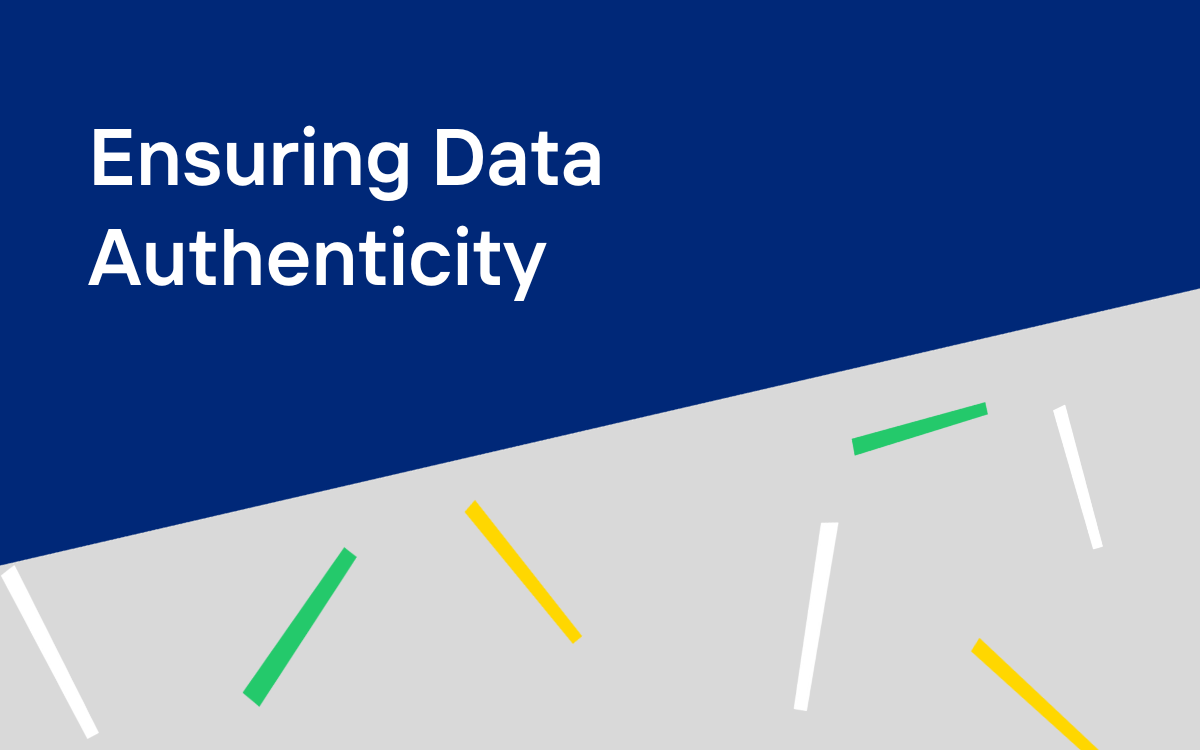Account takeover detection is paramount in today’s digital era, as cyber threats continue to evolve and target personal, corporate, and financial information. When cybercriminals successfully infiltrate a user’s account, they gain unauthorized access to sensitive data, potentially resulting in financial loss, identity theft, and damage to personal and business reputations. Furthermore, once an account is compromised, attackers can use it as a stepping stone to access other systems or disseminate malicious activities, magnifying the potential harm. By implementing robust account takeover detection mechanisms, organizations can quickly identify suspicious activities, thereby reducing the window of opportunity for cybercriminals to exploit compromised accounts. This not only safeguards individual users but also fortifies the overall digital ecosystem against cyber threats.
Understanding Account Takeover Fraud
Account takeover fraud occurs when criminals gain unauthorized access to user accounts, often for financial gain, using methods such as phishing, credential stuffing, and malware. The consequences of account takeover fraud can be severe, leading to unauthorized access to user accounts, resulting in financial losses for both businesses and customers.
Detecting and reversing account takeover fraud can be challenging due to criminals potentially utilizing the same login credentials across multiple websites, making it difficult to identify suspicious activity. This makes it crucial for businesses to implement robust account takeover fraud detection and prevention measures to protect their users’ accounts and maintain their company’s reputation.
Identity theft and unauthorized access are closely linked to account takeover fraud. Criminals can gain unauthorized access to an account and carry out activities such as stealing personal information, altering account details, making fraudulent purchases and withdrawing funds or loyalty points. Account takeover fraud can result in financial losses, reputational damage, and the potential compromise of personal information.
Fraudsters have various methods to obscure unauthorized access to an account, posing a significant challenge for businesses trying to detect and prevent fraud. The use of AI-based account takeover fraud protection and detection software, dedicated bot detection and mitigation solutions, machine learning, and tools that monitor and analyze data from various sources can provide organizations with the tools they need to protect their users’ accounts.
Common Methods of Account Takeover
Account takeover attempts typically involve methods such as phishing, credential stuffing, and malware attacks. Phishing attacks involve fraudulent emails or messages designed to trick users into revealing sensitive information, such as usernames and passwords. Credential stuffing, on the other hand, involves cybercriminals using stolen usernames and passwords to test if they are valid login credentials for other websites.
Malware attacks involve malicious software installed on a user’s device, allowing criminals to monitor and record user activity, including keystrokes, which can lead to unauthorized access to online accounts. By understanding these common methods of account takeover, businesses can better identify potential threats and implement appropriate strategies to protect their users’ accounts from unauthorized access.
Detecting Account Takeover Attempts

Detecting account takeover attempts is crucial in preventing unauthorized access to user accounts and reducing the risk of fraud. Organizations must monitor account activity, analyze user behavior, and detect any anomalies or suspicious patterns that could indicate a takeover attempt. Backend monitoring can also play a vital role in detecting fraudulent activity related to suspicious IP addresses and analyzing timestamp data transfers.
By being mindful of indications of an account takeover (ATO) attack and implementing account takeover fraud prevention strategies, businesses can protect user accounts from unauthorized access and mitigate the potential damage caused by ATO fraud.
Monitoring Login Attempts
Monitoring login attempts offers several advantages, including security threat detection, network security improvement, and brute force attack prevention. By tracking unauthorized login attempts, businesses can detect potential security threats and breaches, identify gaps in network security, and implement measures to strengthen it. Additionally, limiting the number of failed login attempts per user can help prevent brute force attacks.
User activity tracking can also be beneficial for attendance tracking and compliance purposes, providing insights into employee login and logout times. By monitoring login attempts and identifying suspicious activity, businesses can better protect their users’ accounts from unauthorized access and potential account takeover fraud.
Analyzing User Behavior
User behavior analysis is essential for detecting potential account takeover attempts. By tracking, collecting, and analyzing user data and activities, organizations can gain insights into how users interact with their products or services, including monitoring user behavior patterns such as mouse movements, clicks, and focus areas.Velocity rules can be used to identify irregular activities, such as frequent login attempts, changes in location, or purchases. Behavioral analysis is a good step, but modern attackers can make bots look and act like humans now more than ever before. Botters can even use haverested digital fingerprints from real user sessions. Making behavioral analysis less effective when stopping sophisticated adversaries.
Preventing Account Takeover Fraud
Preventing account takeover fraud requires a combination of strategies and tools, including multi-factor authentication, user education, and robust cybersecurity measures. By implementing these measures, businesses can effectively protect their users’ accounts and sensitive data from unauthorized access.
Various strategies can be implemented to prevent account takeover attempts, such as limiting login attempts, implementing a robust authentication process, IP blacklisting, and utilizing a modern bot mitigation solution . By employing these strategies, businesses can mitigate the risks associated with account takeover fraud and safeguard their users’ accounts.
Multi-Factor Authentication
Multi-factor authentication (MFA) is an authentication method that requires users to provide two or more verification factors to gain access to an account or system. MFA provides an additional layer of security by combining multiple factors such as something the user knows (password), something the user has (smartphone or token), and something the user is (biometric data).
By utilizing strong passwords, enabling two-factor authentication, employing biometric authentication, and routinely updating authentication methods, businesses can implement multi-factor authentication to prevent unauthorized access and improve the security of user accounts.
MFA is not foolproof, account takeover attacks generate an extremely high volume of login requests, driving up costs from One Time Password providers through SMS Pumping attacks. These verification methods can also be intercepted through phishing attempts aimed at tricking users into giving the attacker their One Time Password.
See the other ways attackers are targeting MFA in our recent blog.
Educating Users and Staff
Educating users and staff about the risks of account takeover fraud and best practices for online security is crucial for reducing the likelihood of successful attacks. By providing users and staff with the knowledge and tools they need to protect their accounts and sensitive data, businesses can help prevent unauthorized access and mitigate the potential damage caused by account takeover fraud.
Some recommended measures for ensuring online security include using strong passwords, enabling two-factor authentication, monitoring login attempts, and using secure networks. By educating users and staff about these best practices, businesses can create a more secure online environment and prevent account takeover fraud.
Robust Cybersecurity Measures
Implementing robust cybersecurity measures, such as firewalls, encryption, and secure password policies, is essential for protecting user accounts and sensitive data from unauthorized access. These measures can help detect potential threats and prevent criminals from exploiting vulnerabilities in the system.
Additional cybersecurity measures that may be implemented include two-factor authentication, monitoring user activity, and utilizing encryption. By implementing these robust cybersecurity measures, businesses can effectively safeguard their users’ accounts and confidential information from unauthorized access and potential account takeover fraud.
Tools and Solutions for Account Takeover Detection
There are several tools and solutions available for account takeover detection, including device fingerprinting, IP analysis, and bot detection solutions. These tools can help businesses identify and prevent fraudulent activity by analyzing data from various sources and detecting suspicious patterns.
By leveraging these tools and solutions, businesses can enhance their account takeover fraud detection capabilities and better protect their users’ accounts from unauthorized access.
Device Fingerprinting

Device fingerprinting is an identification technique that examines a user’s software and hardware configuration. By gathering data about a user’s device, such as the browser they use and the hardware they possess, businesses can identify and monitor the device when it connects to a website or program.
However, device fingerprinting falls short when attempting to stop the sophisticated automation that attackers use to conduct ATO attacks. In fact entire underground supply chains exist to harvest and sell real user session data to attackers that can be easily used to trick detection into thinking a bot is a real human.
You can read more about how attackers trick device fingerprinting in our blog here.
IP Analysis and Geolocation Tracking
IP analysis and geolocation tracking can help identify unusual connections and flag potential account takeover attempts by monitoring user locations and IP addresses. IP analysis involves examining and analyzing data associated with an IP address, such as geographic location, network provider, and other pertinent details.
By conducting IP analysis and geolocation tracking, businesses can detect potential account takeover attempts by signaling suspicious activities such as multiple logins from disparate locations or IP addresses. This can help organizations better protect their users’ accounts and sensitive data from unauthorized access and potential account takeover fraud.
Unfortunately in the age of digital privacy more legitimate users are using services like residential proxy networks, the same services attackers use to hide their true location. Not only making it harder to detect attackers based on IP location, but also making legitimate users look like an attacker based on their IP.
Bot Detection Solutions
Bots are the preferred tool for attackers launching ATO attacks. Given the high volume of login attempts needed to gain access to accounts with stolen credentials, fraudsters need a fast, effective, and cheap tool in order to make an account takeover attack profitable.
Rather than looking for the signs of automation that can be faked like device fingerprinting, MFA, or IP analysis, you need a detection method that identifies the immutable evidence of automation.
Kasada’s solution utilizes hundreds of sensors to dynamically detect the presence of automation. While constantly changing the signals collected for each request, meaning in the event an attacker ever learns how Kasada’s defenses work, Kasada’s dynamic nature will require attackers to start again from scratch. Giving you an effective long-term solution that is resilient to reverse engineering.
To learn more about how Kasada’s advanced bot defense can help strengthen your security, book a free demo today.
Responding to Account Takeover Incidents
In the event of an account takeover incident, it is important for businesses to take immediate actions to secure affected accounts, investigate the breach, and restore user confidence. This includes disabling compromised accounts, resetting passwords, and informing the user of the incident without delay.
Additionally, businesses must take steps to ensure the prevention of future account takeovers by implementing multi-factor authentication, educating users and staff, enhancing cybersecurity protocols, and utilizing a modern bot detection solution. By taking these steps, businesses can minimize the potential damage caused by account takeover fraud and maintain their company’s reputation.
Immediate Actions
For individuals, upon detecting an account takeover incident, it is imperative to contact the organization that owns the account for assistance. Furthermore, removing permissions and access from the compromised account and isolating it to avoid further damage is crucial.
For businesses, promptly notifying affected users and relevant authorities is also necessary, as well as disabling the compromised accounts and resetting passwords. By taking these immediate actions, businesses can help prevent further damage and protect their users’ accounts and sensitive data from unauthorized access.
Investigating the Breach
Investigating the breach involves determining the cause of the account takeover, identifying any vulnerabilities that were exploited, and taking steps to prevent future incidents. Businesses can investigate the breach by analyzing user behavior, monitoring login attempts, utilizing device fingerprinting, and conducting IP analysis and geolocation tracking.
Assembling evidence of the breach, such as logs of user activity, is necessary to facilitate the identification of the source of the breach and any weaknesses that were exploited. By conducting a thorough investigation, businesses can better understand the root cause of the account takeover incident and implement appropriate measures to prevent future breaches.
Restoring User Confidence
Restoring user confidence after an account takeover incident requires transparent communication, implementing additional security measures, and offering support to affected users. By providing transparent communication regarding the incident, providing restitution for any losses incurred, and instituting additional security protocols, businesses can regain user confidence.
Offering customer support, introducing additional security measures like modern bot detection, and educating users and staff on how to prevent account takeover fraud can further help restore user confidence after an account takeover incident.
Kasada for Account Takeover Detection & Defense
Kasada understands the mindset of an attacker. Our experts constantly monitor underground bot communities and quickly inject learning into our platform. We work as a partner with our customers, ensuring that in the event of an attack they are never alone. If you are looking for a hands free and proactive approach to stopping account takeover attacks, get in touch with our bot hunting experts here.
Frequently Asked Questions
What is account takeover detection?
Account Takeover Detection is a collection of systems and processes that identify and block attackers from taking over legitimate user’s accounts. This security stack can include, bot detection, MFA, and security education for users and staff. By leveraging these systems and processes, organizations can detect and prevent account takeover attacks.
What are the red flags for account takeover?
Account takeover red flags include multiple login attempts, password change requests, and changes to the OTPs backup device or email address.
It is important to be vigilant for these warning signs.
What is account takeover in banking?
Account takeover fraud is a form of identity theft where fraudsters gain access to your online accounts by obtaining sensitive details. They then impersonate you to modify account info, make transactions, withdraw cash, or exploit the stolen data for further breaches.
It is important to be aware of the risks associated with account takeover fraud and take steps to protect yourself. This includes using strong passwords, enabling two-factor authentication, and monitoring your accounts for suspicious activity.
What is the account takeover process?
Account Takeover (ATO) is a form of identity theft where a fraudster use bots to test stolen passwords and usernames in an attempt to gain access to a victim’s bank, e-commerce site, or other types of valuable accounts.
The attacker will then change the login credentials to lock the original owner out of their own account.
What measures can businesses take to prevent account takeover fraud?
Businesses can protect themselves from account takeover fraud by implementing multi-factor authentication, educating their users and staff, and utilizing a modern bot mitigation solution.





